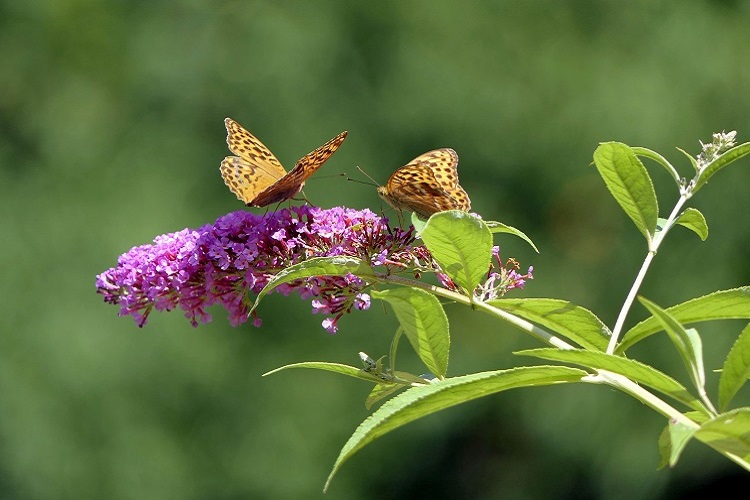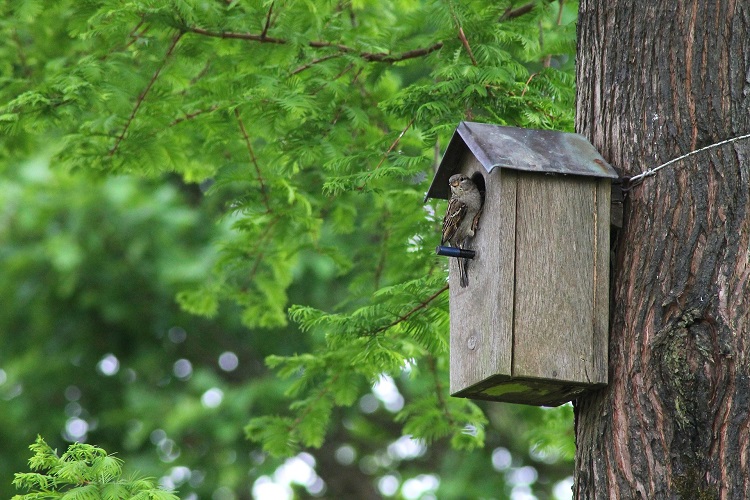It’s true what they say – if you make a home for wildlife, it will arrive. If you’re lucky enough to have a garden or an outdoor space, this guide will teach you how to turn it into a wildlife heaven.
From birds and bees to hedgehogs, our tips cover the best ways to attract local wildlife and bring the outdoors to you.
Attract Butterflies and Bees to Your Garden With Wildflowers

Few species capture the attention like a butterfly. Their mosaic wings are a symbol of summer and add colour to any garden. Bees may not have the same mesmerising impact, but we rely on their hard work to pollinate almost all of the naturally-grown food we eat. And who doesn’t smile when they see the first bee of the year?
With the population of pollinating insects in decline in the UK, it’s important that we all to do our bit.
Wildflowers are the trick to attracting pollinators to our gardens. Any open-faced flowers will do, but bees in particular love species like Aubretia in spring, Catmint in summer, Dahlias in autumn and Winter Heather in, yeah, you guessed it.
Butterflies have similar tastes and will happily pollinate on all of the plants mentioned above. They also adore Buddleja, Hebe and ‘Bowles’s Mauve’. But you can’t have butterflies without caterpillars, so it’s best to have some nasturtiums, nettles or hops around for them to munch on.
Make a Home for Bees With a Bee Hotel

A bee hotel is essentially a box full of holes where solitary bees can lay their eggs. As their name suggests, solitary bees don’t live in beehives and instead prefer a more independent lifestyle. They love to leave their eggs in natural tunnels and crevices like dead wood and hard soil. Your bee hotel will be full of these tunnels and will provide the perfect place for them to raise their young.
It’s satisfying to see this natural process happen in your garden, and you can rest assured that you’re doing your bit for the planet. You can find bee hotels for sale at a variety of garden and DIY retailers or garden centres.
Give a Hedgehog a Place to Call Home

Hedgehogs are shy, nocturnal creatures which makes spotting one pretty rare. But, that doesn’t mean we shouldn’t look out for them, especially seeing as it’s estimated that there’s less than one million hogs left in the UK. This is in part down to the destruction of their homes and habitats.
Hedgehogs use their homes as places to rest, raise their hoglets and hibernate in winter. We think every hedgehog deserves a home to be proud of. After all, all they need is a dark, well-ventilated area with plenty of natural insulation like leaves and straw. A pile of leaves at the bottom of the garden will do the trick – just remember not to tidy it up.
There are some more sophisticated homes available to buy online, but you can save money by making one from old bits of untreated wood like wine crates.
Create a Feeding Spot for Hungry Birds

“Did you hear about that new place that just opened? Their seeds are to die for”. If birds can sing, they can presumably give restaurant tips? Anyway, that’s what they’d be saying after a visit to your new garden eatery.
Putting up a bird feeder with seed trays and fat balls will attract all sorts of birds to your garden, from sparrows and starlings to chaffinches and robins. It’s a total delight to watch them feed on a summer’s day. Depending on where you live, your seeds may attract grey squirrels too. Squirrels can be greedy and sometimes a bit destructive, so consider buying an anti-squirrel feeder before they eat you out of house and home.
Create a Place for Birds to Call Their Home

While the birds are enjoying your free seeds during the summer, you can be planning ahead with a bird box ready for the winter. When the nights get shorter and temperatures drop, birds start to look for a place to roost. They may even plan ahead themselves and begin storing food in there before winter arrives.
Bird boxes are available to buy from garden centres and plenty of online retailers. They range in price, but it’s where you place yours that will determine how likely a bird is to use it. Don’t place it too close to the bird feeder. Although you might think you’re doing them a favour, this is actually a place of high activity and may put birds off from settling down.
Birds like their homes to blend in, so if you have mature trees in your garden, they’ll make for a perfect location. North-east facing boxes tend to be the most popular as they’re protected from direct sunlight. Choose a bird box with an appropriately sized entrance for the species you’d like to settle there. Or, if you plan on putting a few up, use different sizes and spread them out around your garden.
Create a Wild Patch for Small Mammals

As lovely as carefully manicured gardens look, they don’t provide the best environment for wildlife. Whilst we’re not telling you to give it all up and let your garden grow wild and free, a small unmaintained patch will make a big difference. It mimics the environment of a meadow, where small mammals like voles, shrews and wood mice will find shelter and food.
Let us know if you have your own suggestions for creating the perfect wildlife sanctuary in your garden. We’d always love to see images of what you’ve done, or who has come to visit. Share on our social channels or tag us in your photography.
